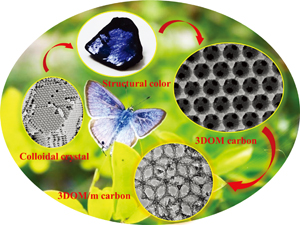 PDF(6186 KB)
PDF(6186 KB)


 PDF(6186 KB)
PDF(6186 KB)
 PDF(6186 KB)
PDF(6186 KB)
三维有序大孔炭的设计构筑、性能及应用研究
 ({{custom_author.role_cn}}), {{javascript:window.custom_author_cn_index++;}}
({{custom_author.role_cn}}), {{javascript:window.custom_author_cn_index++;}}Synthesis and Application of Three-Dimensionally Ordered Macroporous Carbon with Designed Pore Architecture
 ({{custom_author.role_en}}), {{javascript:window.custom_author_en_index++;}}
({{custom_author.role_en}}), {{javascript:window.custom_author_en_index++;}}
| {{custom_ref.label}} |
{{custom_citation.content}}
{{custom_citation.annotation}}
|
/
| 〈 |
|
〉 |